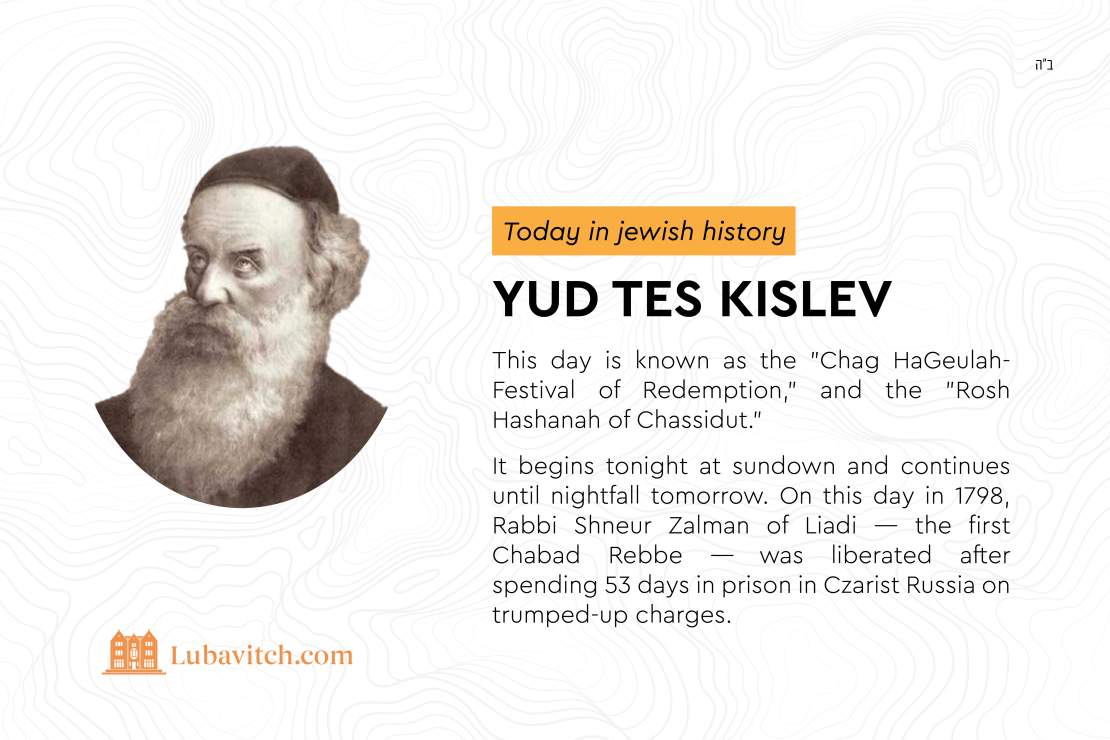19 Kislev: Rosh Hashana of Chassidut
Yud-Tes Kislev, also known as the “Chag HaGeulah—The Holiday of Redemption,” or the “Rosh Hashana of Chassidut,” begins tonight and continues until sundown tomorrow. On this day in 1798, the Alter Rebbe, Rabbi Shneur Zalman of Liadi, was finally freed after spending 53 days in prison. Rabbi Shneur Zalman was the founder of Chabad Chassidut and the first Chabad Rebbe, and his freedom marked the beginning of a new era: that of the open dissemination of Chabad Chassidut. In 1796, the Alter Rebbe published the Tanya, of which Reb Levi Yitzchok of Berditchev said, “Reb Shneur Zalman put such a great G-d in such a tiny book!”
It was also on the 19th of Kislev (1772) that Rabbi Dovber, the Maggid of Mezritch passed away, at which time he told the Alter Rebbe, who was his disciple, “This day is our yom tov (holiday).”
What mitzvah can you do today in the spirit of Yud-Tes Kislev?
——–
It’s a 226 year old celebration. And it happens all over the world.
The 19th of Kislev, beginning at sunset on Thursday evening and lasting through Friday, Dec. 20 will be marked globally with virtual lectures and farbrengens—gatherings of people dedicated to the study of Chabad Chasidut—the mystical inner dimension of Torah study.
The 19th of Kislev, colloquially referred to as “Yud Tes Kislev,” marks the date when the founder of the Chabad movement, Rabbi Schneur Zalman of Liadi (1745—1812) was released from imprisonment in czarist Russia. This event gave leave for Rabbi Schneur Zalman to advance the teachings of Chabad Chasidism in Eastern Europe, which would eventually be disseminated throughout the world by his successors.
The formative years of Rabbi Schneur Zalman’s approach were fraught with opposition, but today Yud Tes Kislev has become the turning point for the study and lifestyle of Chasidut. In 1798 Rabbi Schneur Zalman’s contemporaries argued that the teachings of Chasidut were to be accessed only by scholars; in 2024 the argument no longer exists. Today, the thought and practice of Chabad, with its centers in 110 countries is widely shared and made accessible to every Jewish demographic.

Be the first to write a comment.